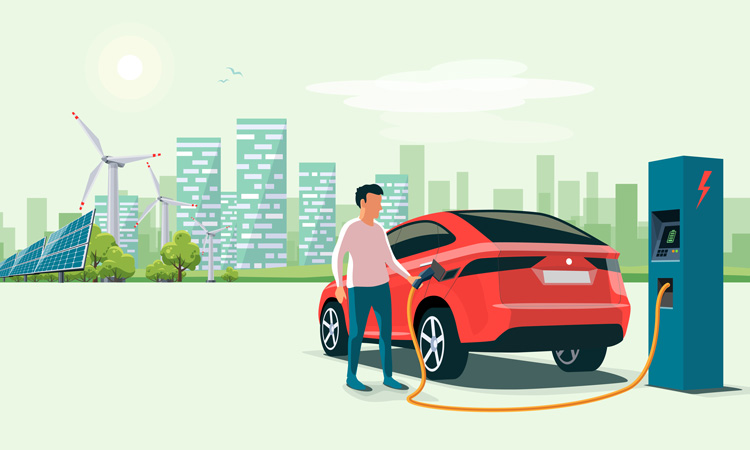Widespread EV adoption could save U.S. $70 billion annually, study finds
- Like
- Digg
- Del
- Tumblr
- VKontakte
- Buffer
- Love This
- Odnoklassniki
- Meneame
- Blogger
- Amazon
- Yahoo Mail
- Gmail
- AOL
- Newsvine
- HackerNews
- Evernote
- MySpace
- Mail.ru
- Viadeo
- Line
- Comments
- Yummly
- SMS
- Viber
- Telegram
- Subscribe
- Skype
- Facebook Messenger
- Kakao
- LiveJournal
- Yammer
- Edgar
- Fintel
- Mix
- Instapaper
- Copy Link
Posted: 18 August 2020 | Sam Mehmet (Intelligent Transport)
The study set out to evaluate the health and economic implications of electric vehicle (EV) adoption.


Northwestern University researchers have combined climate modelling with public health data to evaluate the impact of electric vehicles (EVs) on U.S. lives and the economy.
The new study found that if EVs replaced 25 per cent of combustion-engine cars currently on the road, the United States would save approximately $17 billion annually by avoiding damages from climate change and air pollution. In more aggressive scenarios – replacing 75 per cent of cars with EVs and increasing renewable energy generation – savings could reportedly reach as much as $70 billion annually.
“Vehicle electrification in the United States could prevent hundreds to thousands of premature deaths annually while reducing carbon emissions by hundreds of millions of tons,” said Daniel Peters, who led the study. “This highlights the potential of co-beneficial solutions to climate change that not only curb greenhouse gas emissions but also reduce the health burden of harmful air pollution.”
“From an engineering and technological standpoint, people have been developing solutions to climate change for years,” added Northwestern’s Daniel Horton, senior author of the study. “But we need to rigorously assess these solutions. This study presents a nuanced look at EVs and energy generation and found that EV adoption not only reduces greenhouse gases but saves lives.”
To conduct the study, Horton, Peters and their team looked at vehicle fleet and emissions data from 2014. If 25 per cent of U.S. drivers adopted EVs in 2014 – and the power required to charge their batteries came from 2014’s energy generation infrastructure – then 250 million tonnes of carbon dioxide (CO2) emissions would have been mitigated, the researchers explained.
“A good example is to look at nitrogen oxides (NOx), a group of chemicals produced by fossil-fuel combustion,” Peters said. “NOx itself is damaging to respiratory health, but when it’s exposed to sunlight and volatile organic compounds in the atmosphere, ozone and particulate matter can form.”
To account for these interactions, the researchers used a chemistry-climate model developed at the Geophysical Fluid Dynamics Laboratory. Jordan Schnell, a postdoctoral fellow in Horton’s lab, performed the model experiments that simultaneously simulate the atmosphere’s weather and chemistry, including how emissions from combustion engines and power generation sources interact with each other and other emissions sources in their environments.
With this model, the researchers simulated air pollutant changes across the lower 48 states, based on different levels of EV adoption and renewable energy generation. Then, they combined this information with publicly available county health data from the U.S. Environmental Protection Agency (EPA). This combination enabled the research team to assess health consequences from the air quality changes caused by each electrification scenario.
The research team assigned dollar values to the avoided climate and health damages that could be brought about by EV adoption by applying the social cost of carbon and value of statistical life metrics to their emission change results. These commonly used policy tools attach a price tag to long-term health, environmental and agricultural damages.
“The social cost of carbon and value of statistical life are much-studied and much-debated metrics,” Horton said. “But they are regularly used to make policy decisions. It helps put a tangible value on the consequences of emitting largely intangible gases into the public sphere that is our shared atmosphere.”
Related topics
Air Quality, Alternative Power, Fleet Management & Maintenance, Sustainable Urban Transport
Related modes
Electric Transport
Related cities
USA
Related organisations
Northwestern University
Related people
Daniel Horton, Daniel Peters







